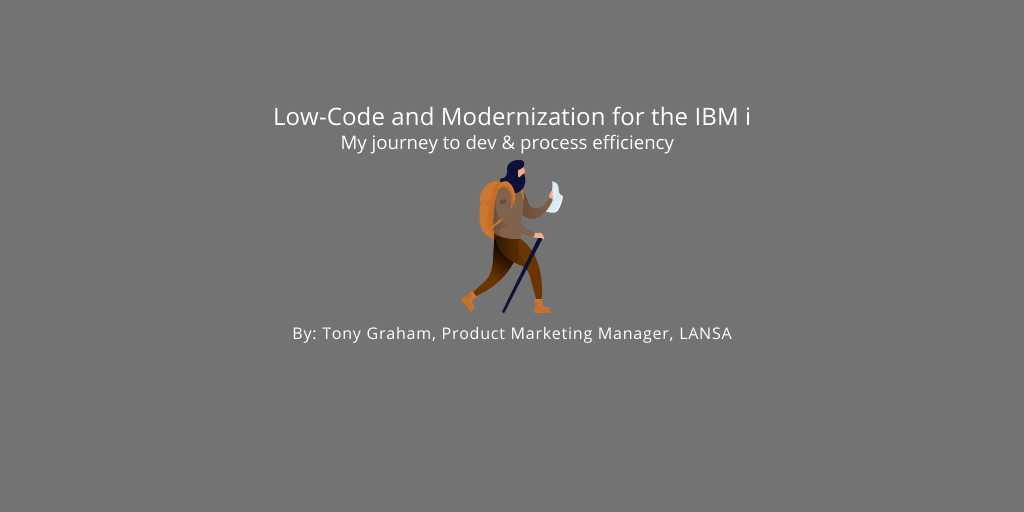“We’ve all got a job to do”.
While that may be true, it’s precisely the type of thinking that sometimes leads to ungoverned technologies roaming free throughout a business. The term is ominously known as “shadow IT” and it’s when an otherwise well-meaning employee or department goes rogue and downloads, builds or deploys a technology solution unbeknownst to the IT experts.
Perhaps they add numerous custom fields and tables to the underlying database structure of a cloud solution that has been deployed for their department’s workflow, but without good knowledge of database design, data governance or the implications for ongoing maintenance and support of the overall application. Or perhaps they register a new URL and use a cloud-based website publishing tool to launch a product-specific microsite without regard to the overall company website, website security and the overall customer experience. Or they get a no-code platform to rapidly create a mobile app for their service line without understanding the complex integration requirements to connect the app into back-office systems and databases. Whatever they do under the cover of Shadow IT, it’s done to fulfill a specific business need but without the knowledge or prior consideration of your IT team. Some businesses philosophically embrace this. Many others, often depending on the industry and scrutiny of data handling and security concerns, have a need for a more organized and cross-functionally thoughtful deployment of technology solutions.
Shadow IT solutions create tension and disruption within a business because they often don’t adhere to the organization’s requirements for data control, security and governance. What may have started ingenuously with non-IT types helping themselves to technology to do work every day can result in compliance fines, unintegrated systems and a mess that IT is often called upon to clean up.
These unofficial technologies have been plaguing IT teams for years. In many companies, Shadow IT spending accounts for over a third of overall IT spend. Had the business user just asked, IT might have had a sanctioned solution they could turn on to help send that large file or publish new web pages. But the bigger problem is business users are often told “no” because IT is either too busy or it’s a request beyond the available skillset of IT to immediately deliver.
The Need for Digital Transformation
Organizations that strive to transform, grow and innovate often do so by implementing digital transformation strategies. They’ll add new lines of service, expand geographically, launch new products, and relaunch existing products that solve new problems; and technology helps drive that growth.
A transportation fleet manager, for instance, may want a mobile application for his drivers. With an army of remote drivers, this line of business (LOB) leader believes deploying a mobile app to track driver locations will optimize routes, save fuel and increase business efficiency. It’s not uncommon to submit the idea to the overworked and understaffed IT department and get it declined.
Oftentimes, IT departments say no because the team has a backlog of other things to catch up on and numerous fires to put out. Increasingly, however, IT may not have the specific development skills to build that mobile application because it requires additional programming languages or the unavailability of the one person who understands that new language being tied up with a mission-critical project for another part of the business. Aren’t they all mission-critical?
We get it, resources are scarce. So, what does the LOB manager do? They build it themselves or call on an outside resource to do it for them. But just because that person can dream it doesn’t mean it’s the same dream for the business.
The app the trucking manager built now has to communicate with back-office data infrastructure and sync business rules between mobile and web applications, among other things. For instance, the LOB manager will need to have a conversation with the team who manages the ERP first if the app needs to update records. A typical business manager just doesn’t have the foresight or technical prowess to see the entire project scope and implications, let alone data security concerns, other industry data handling mandates and impacted downstream systems.
The app’s implementation could very well fail from the start, all because IT wasn’t looped in. Then we find the LOB manager comes knocking on IT’s door (or hitting them up on Slack, email, Skype or sending a Wuphf!) to get a bailout. But trust us, it becomes an extremely hard sell to get IT support once you’ve already gone down this shadowy path.
These kinds of Shadow IT projects may have started out with good intentions but may neither serve the best interests of the business nor expeditiously yield a workable solution. But we have only ourselves to blame for winding up here.
How We Normalized Shadow IT
Anytime new software was deployed, hours upon hours of training were scheduled so users were exposed to way more than they ever needed to know about something they may only use sparingly. Nowadays, anyone can download and use a piece of software without any training at all and, if you can muster up 90 seconds of attention span, you might qualify as a certifiable expert on the thing!
This idea has led to the major change in our expectations. Because technology is more accessible, users tend to believe that it’s safe to do business in the cloud and transact online at home, at school and at the office. The notion of buying something online or banking online used to blow our minds. Now, we’re literally scanning checks and depositing them to our accounts with our smart phones, before you can bring the mail – and those packages Amazon miraculously delivered within 48 hours – back inside.
Additionally, the culture of technology has changed. LOB leaders – and their managers – are confident in their ability to identify a business problem and generate a solution to that problem. The only question is: How do I best get it done?
IT might be able to help at some point in the future. Or, the fleet manager who saw something online once about a point-and-click programming tool that would enable the app to be built visually, and quickly, decides not to bother IT with the request and go at it alone. The promise of no-code platforms, however, is that you can create an app that satisfies all your business needs, which unbeknownst to the manager, usually can’t get you all the way there.
No-code platforms, while very capable and cool for a limited set of use cases, require the heavy application lifting – the systems of record, moderate to complex business rules, integration, etc. – to be done outside the no-code app. That means someone is charged with authoring the complex stuff with traditional software programming methods and integrating it with the no-code app so it can work. For example, integration with a centralized database with varying levels of service and security and integration with CRMs, ERPs and partner systems. So, you’ll soon be knocking on IT’s door for help. (Or you’ll pay expensive and scarce outside consultants to perform the work in the shadows. Danger, Will Robinson…. How will you ever maintain that code?!?)
Rather than have your business team responsible for fleet maintenance and repair suddenly become experts enough to launch IT, why not have IT act as the good steward of the architecture design, who can govern and scrutinize the design?
A More Agile IT Team
IT personnel also have a job to do and that job is to manage the technical processes and operations of an organization. This is never easy. They are masters at data handling, data integration, data formats, data movement, databases, data storage, data audits and data compliance, and they also understand the company’s business rules and processes well enough to elegantly build technology around them.
If the LOB manager really gets into the application and the business requirements, he or she will quickly realize there’s much more to consider than previously thought. IT personnel are better skilled and equipped to design databases, interact with database administrators and embody business rules to optimize the application’s services and the cost of ownership. They are better at understanding the scope of development and integration, and can avoid problems before they begin by implementing smarter design and architecture.
Savvy companies understand the value of IT to their business and they proactively curtail the shadow IT ruckus by arming their IT departments with the tools not only to tackle the technical projects critical to their business, but also to spend less time maintaining those projects. Low-code development platforms like Visual LANSA enable a more agile and productive IT staff and help keep unnecessary “shadow IT” out of their organization’s vocabulary.
Companies want to do increasingly cool things but they often don’t have the skills or time to commit to them. IT is the best team to help you innovate and deliver durable and complex applications. It’s time to free up these valuable resources to be the clearinghouse for these projects and help them say “Yes” to business innovation and “No” to shadow IT.
After all, who’s the best choice to design, development, implement and maintain that essential mobile application – your IT director or the department in charge of managing your trucks?


























